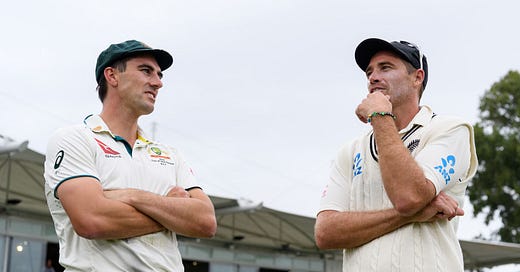A back-breaking loss
Australia prove themselves to be hoodoo gurus, and some outsourced stories from a lost weekend
Way to suck the last, waning rays of sunshine from our summer, Alex Carey, Mitchell Marsh and the peerless Pat Cummins.
Day four at Hagley Oval yesterday started with abnormal and in hindsight misguided waves of optimism that the Australian hoodoo would be broken, but ended like every other match on this wretched tour has, with the winning be…
Keep reading with a 7-day free trial
Subscribe to The Bounce to keep reading this post and get 7 days of free access to the full post archives.




